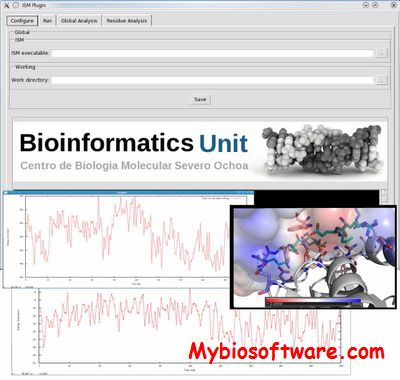MM-ISMSA
:: DESCRIPTION
MM-ISMSA is an ultrafast and accurate scoring function for protein-protein and protein-ligand docking
::DEVELOPER
Unidad de Bioinformatica CBMSO
:: SCREENSHOTS
:: REQUIREMENTS
- Windows / Linux
- Python
- PyMOL
:: DOWNLOAD
:: MORE INFORMATION
Citation
Javier Klett, Alfonso Núñez-Salgado, Helena G. Dos Santos, Álvaro Cortés-Cabrera, Almudena Perona, Rubén Gil-Redondo, David Abia, Federico Gago, and Antonio Morreale
MM-ISMSA: an ultra-fast and accurate scoring function for protein-protein docking.
J Chem Theory Comput. 2012 Sep 11;8(9):3395-3408
